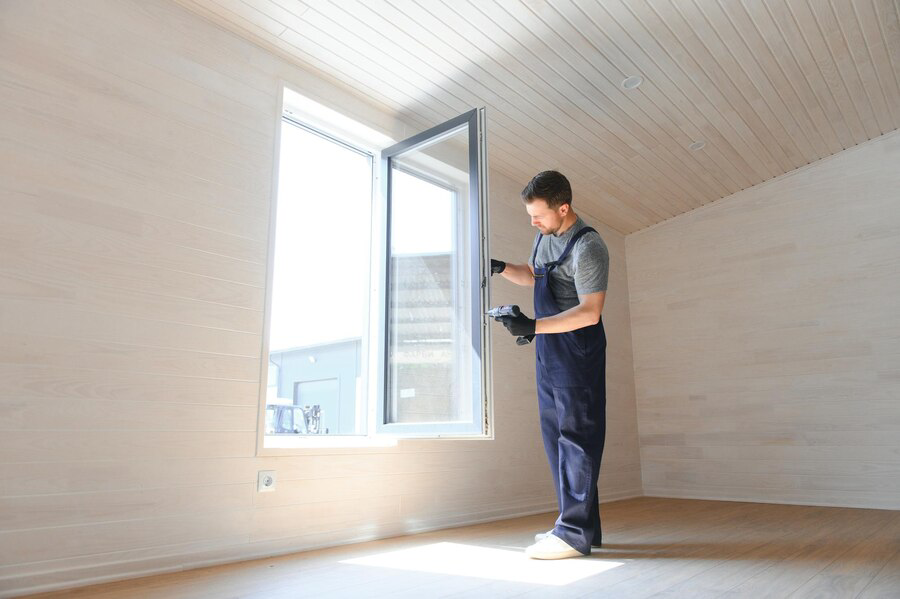
The Science Behind Energy-Efficient Replacement Windows
In the ever-evolving world of home improvement, energy efficiency has become a cornerstone of modern design. Among the various upgrades homeowners consider, replacement windows stand out for their ability to enhance both aesthetics and functionality while reducing energy consumption. But what exactly makes these windows so efficient, and how do they contribute to a greener, more sustainable future? In this blog series, we’ll delve into the science behind energy-efficient replacement windows, exploring the innovative technologies and design principles that make them a smart choice for homeowners. From advanced materials like low-emissivity glass to strategic installation techniques, we’ll uncover the key factors driving their energy-saving capabilities and shed light on how investing in these windows can not only lower utility bills but also decrease carbon footprints. Join us on a journey through the fascinating world of window technology and discover how it’s shaping the future of eco-friendly living.
The Science Behind Energy-Efficient Replacement Windows
Energy-efficient windows are an essential component of modern, sustainable homes. These windows are designed to minimize energy loss, improve indoor comfort, and reduce utility costs. By leveraging advanced materials and technologies, energy-efficient windows can significantly impact a home’s overall energy performance. This article delves into the scientific principles behind these windows, exploring how they work, their components, and their benefits.
Understanding U-Value and Solar Heat Gain Coefficient (SHGC)
The U-value and Solar Heat Gain Coefficient (SHGC) are critical metrics used to evaluate a window’s energy performance. The U-value measures the rate of heat transfer through the window, indicating how well the window insulates. A lower U-value signifies better insulation, which is crucial for maintaining a stable indoor temperature and reducing heating and cooling costs. On the other hand, the SHGC measures the fraction of solar radiation admitted through the window. This value ranges from 0 to 1, with lower values indicating less solar heat gain. The SHGC is particularly important in hot climates where excessive heat gain can lead to increased cooling demands. By selecting windows with optimal U-values and SHGC ratings, homeowners can enhance their home’s energy efficiency and comfort.
The Role of Low-E Glass Coatings
Low-emissivity (Low-E) glass coatings are a vital feature of energy-efficient windows. These coatings consist of ultra-thin metallic layers applied to the window glass, designed to reflect infrared (IR) radiation while allowing visible light to pass through. This selective reflection helps retain indoor heat during the winter and block external heat during the summer. Low-E coatings come in various types, each tailored to different climates and needs. For instance, some coatings are optimized for cooler climates to maximize heat retention, while others are designed for warmer regions to minimize heat gain. By effectively managing thermal radiation, Low-E coatings contribute to lower energy consumption and enhanced indoor comfort.
The Importance of Multiple Panes and Gas Fills
Energy-efficient windows often feature double or triple panes of glass, creating insulating layers that significantly reduce heat transfer compared to single-pane windows. The spaces between these panes are typically filled with inert gasses such as argon or krypton, which are denser than air and provide better thermal insulation. These gas fills reduce convection and conduction between the panes, further improving the window’s insulating properties. Additionally, the multiple panes offer better soundproofing, enhancing the overall comfort of the home. By incorporating multiple panes and gas fills, energy-efficient windows can effectively minimize energy loss and improve indoor climate control.
Frame Materials and Their Impact on Energy Efficiency
The material of the window frame plays a crucial role in its energy performance. Common frame materials include vinyl, wood, aluminum, and fiberglass, each with distinct thermal properties. Vinyl frames are popular for their excellent thermal insulation, low maintenance, and cost-effectiveness. Wood frames offer good insulation and aesthetic appeal but require more maintenance. Aluminum frames, while durable and lightweight, are less efficient insulators unless they include thermal breaks to reduce heat transfer. Fiberglass frames combine strength, durability, and superior insulation, making them an excellent choice for energy efficiency. Selecting the right frame material is essential to maximizing a window’s energy-saving potential and ensuring long-term performance.

Advanced Window Technologies: Smart Glass and Dynamic Glazing
Innovations in window technology have introduced smart glass and dynamic glazing, which enhance energy efficiency and user comfort. Smart glass can change its tint in response to electrical stimuli or sunlight, providing dynamic control over light and heat transmission. This technology helps reduce glare, improve privacy, and minimize solar heat gain, contributing to energy savings.
The Science Behind Energy-Efficient Replacement Windows
Energy-efficient windows are an essential component of modern, sustainable homes. These windows are designed to minimize energy loss, improve indoor comfort, and reduce utility costs. By leveraging advanced materials and technologies, energy-efficient windows can significantly impact a home’s overall energy performance. This article delves into the scientific principles behind these windows, exploring how they work, their components, and their benefits. Understanding U-Value and Solar Heat Gain Coefficient (SHGC) Energy-efficient windows are evaluated based on several key metrics, among which the U-value and Solar Heat Gain Coefficient (SHGC) are paramount. Understanding these metrics is crucial for selecting the right windows to enhance a home’s energy performance.
What is U-Value
The U-value, also known as thermal transmittance, measures the rate of heat transfer through a window. It is expressed in units of watts per square meter per degree Kelvin (W/m²K). Essentially, the U-value indicates how well a window insulates against heat loss. A lower U-value signifies better insulation properties, meaning less heat escapes through the window during colder months.
Importance of U-Value in Energy Efficiency
A window with a low U-value contributes significantly to energy efficiency by reducing the need for heating in the winter and cooling in the summer. By maintaining a stable indoor temperature, such windows help lower energy bills and enhance indoor comfort. For example, in colder climates, windows with low U-values are particularly beneficial as they minimize heat loss, thereby reducing the reliance on heating systems.
Factors Affecting U-Value
Several factors influence a window’s U-value, including the type of glass, the number of panes, and the presence of insulating gas fills. Double or triple-pane windows typically have lower U-values compared to single-pane windows due to the additional layers of glass and insulating spaces. The materials used for window frames and the quality of installation also play crucial roles in determining the U-value.
What is the Solar Heat Gain Coefficient (SHGC)?
The Solar Heat Gain Coefficient (SHGC) measures the fraction of solar radiation admitted through a window, both directly transmitted and absorbed and subsequently released inward. SHGC is expressed as a number between 0 and 1. A lower SHGC means less solar heat is transmitted through the window, which is beneficial in hot climates.
Importance of SHGC in Energy Efficiency
The SHGC is critical for managing solar heat gain, which can significantly impact a home’s cooling requirements. In warmer climates, windows with a low SHGC help reduce the amount of heat entering the home, thereby decreasing the need for air conditioning and lowering energy costs. Conversely, in cooler climates, a higher SHGC can be advantageous as it allows more solar heat to enter the home, reducing heating demands.
The Science Behind Energy-Efficient Replacement Windows
Frame Materials and Their Impact on Energy Efficiency
The choice of frame material is crucial for the energy performance of windows. Different materials offer varying levels of insulation, durability, and sustainability, affecting the overall efficiency of the window system.
- Vinyl Frames: Vinyl frames are popular for their excellent thermal insulation, low maintenance, and affordability. They provide a tight seal, reducing energy loss and enhancing overall efficiency.
- Wood Frames: Wood frames offer natural insulation and aesthetic appeal but require more maintenance. They are suitable for homeowners seeking traditional charm and energy efficiency.
- Aluminum Frames: Aluminum frames are lightweight and durable but conductive, which can lead to thermal bridging and energy loss. Thermal breaks can mitigate this issue, improving energy efficiency.
- Fiberglass Frames: Fiberglass frames combine strength, durability, and superior insulation properties. They offer excellent thermal performance and minimal maintenance, making them an ideal choice for energy efficiency.
Conclusion
Understanding the science behind energy-efficient replacement windows sheds light on the tangible benefits they offer. Not only do they enhance the aesthetic appeal of your home, but they also contribute to significant energy savings and environmental sustainability. By utilizing advanced technologies such as low-emissivity coatings and multi-pane insulation, these windows help regulate indoor temperatures, reduce reliance on heating and cooling systems, and ultimately lower utility bills. Moreover, their durable construction ensures long-term performance, making them a worthwhile investment for any homeowner looking to improve comfort and efficiency.
For more information on energy-efficient replacement windows and how they can transform your home, feel free to contact EZ Window Solutions of Strongsville. Our team of experts is dedicated to providing tailored solutions to meet your needs and enhance the energy efficiency and comfort of your living spaces. Reach out to us at +14402303838 to schedule a consultation and take the first step toward a more sustainable and comfortable home environment.


Write a Comment